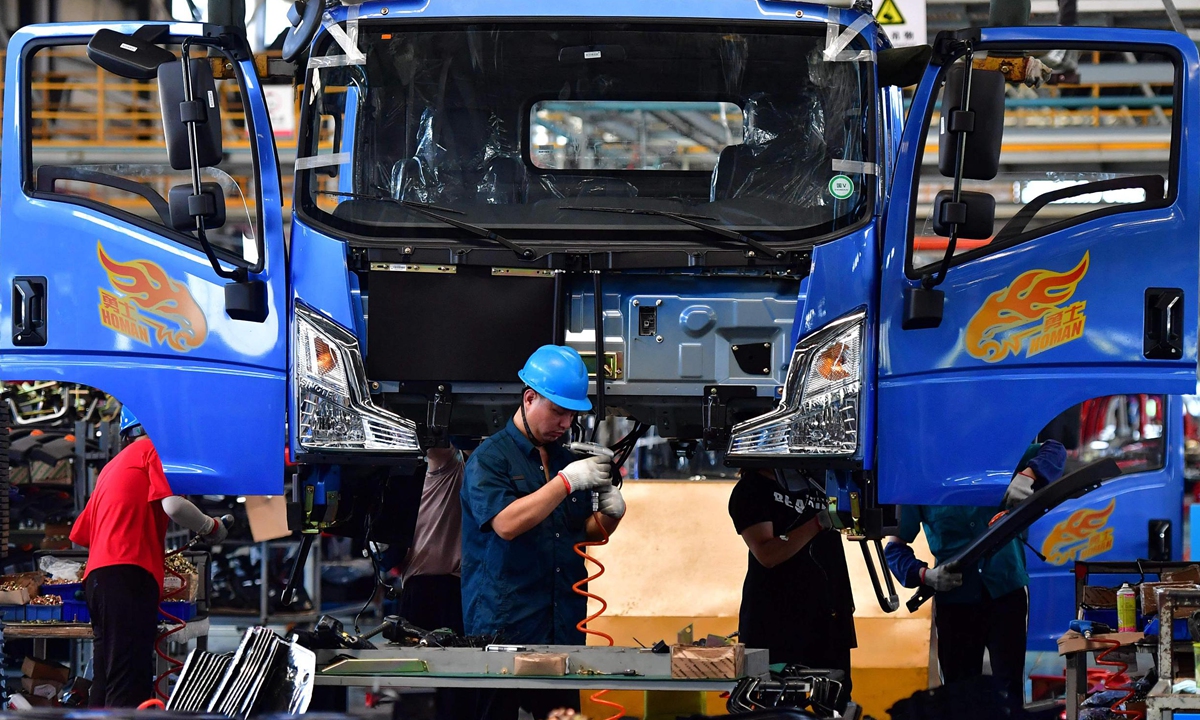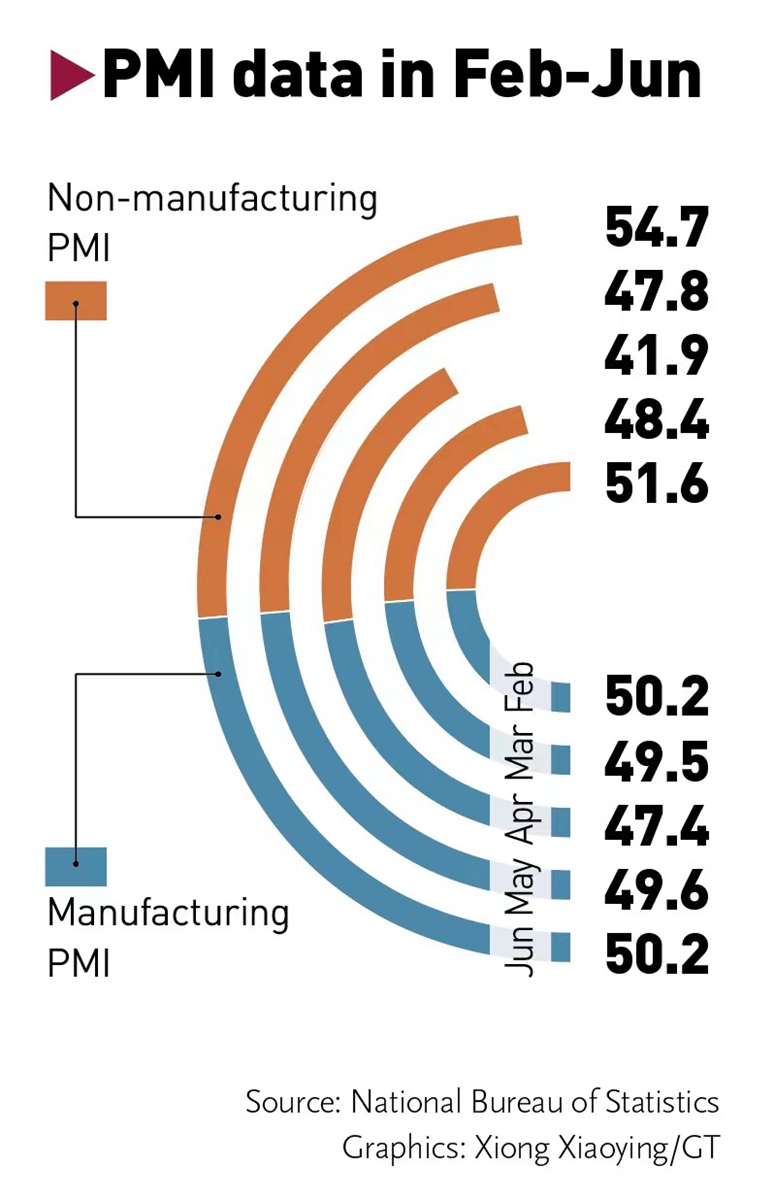
PMI Photo:VCG

PMI data
China's factory and service activities bounced back in June for the first time since February, in the latest sign of accelerating recovery of the Chinese economy, as the impact of the COVID-19 epidemic weakened and proactive fiscal and monetary policies gradually took effect, according to official data on Thursday.
In the latest move to further shore up the economy, the central government will raise 300 billion yuan ($44.6 billion) through financial bond issuance to replenish capital for major projects and special debt projects, and to expand effective investment to boost employment and consumption, according to an executive meeting of the State Council held on Thursday, presided over by Premier Li Keqiang.
The purchasing managers' index (PMI) for China's manufacturing sector came in at 50.2 in June, up from 49.6 in May, while the non-manufacturing PMI in June improved to 54.7 from 47.8 in May, data from the National Bureau of Statistics (NBS) showed.
A reading above 50 indicates expansion, while below 50 reflects contraction.
"As the epidemic prevention and control situation in China continues to improve and a package of policies and measures to stabilize the economy are taking effect at a faster pace, China's overall economic recovery has picked up speed," NBS senior statistician Zhao Qinghe said.
The June PMI data, which came prior to other June economic barometers, offer great hope for an accelerated economic recovery in the world's second-largest economy since major cities, including Beijing and Shanghai, reined in recent COVID-19 outbreaks and resumed work and production.
NBS data on Thursday pointed to an overall leap in new manufacturing orders, logistics and a revival of the service sector.
The sub-index for production stood at 52.8 in June, up 3.1 points from May, and the sub-index for new orders stood at 50.4, up 2.2 points from May.
With policies and measures implemented to ensure the smooth delivery of logistics, enterprises saw their delivery time in June significantly shorter than May as the supplier delivery time index came in at 51.3 in June, 7.2 points higher than in May.
Business expectations also improved. The enterprise expectation index came in at 55.2 in June, up 1.3 points from May, rising to a three-month high, as business confidence continued to rebound.
The rebound of PMI data in June underscored an accelerated recovery of domestic economic activity and stronger demand after the epidemic was brought under effective control in China in June, Zhou Maohua, a macroeconomic analyst at Everbright Bank, told the Global Times on Thursday.
Thursday's data also showed that the PMI for China's non-manufacturing sector came in at 54.7 in June, up 6.9 points from May, boosted by strong recovery in the service sector.
A business activity index of the service sector in June shot up to 54.3 in June, up 7.2 points from May. Sectors that were hard hit by COVID-19, including rail and air transportation, accommodation, catering, and the culture and entertainment industry have caught up with previously pent up demand.
Service sector activities tend to rebound strongly in the post-epidemic period, and the relief policies targeting transport, tourism, catering are expected to further boost the service sector, Zhou said.
In the latest move, China announced the removal of the "asterisk" on the travel code app for people who want to leave COVID-hit regions on Wednesday, and Shanghai also resumed dine-in services the same day.
As the outbreaks in Beijing and Shanghai have been reined in, multiple Chinese cities, including Sanya, South China's Hainan province, have relaxed strict anti-epidemic restrictions for arrivals from Beijing and Shanghai.
As local governments become more flexible in coordinating epidemic prevention and control, it is expected that the economy will see a V-shaped rebound in June, pinning hope for a strong economic rebound in the second half of the year, experts said.
In order to stabilize growth, all levels of governments - from the State Council, China's cabinet, to ministries and local governments have raced to implement a sweeping set of 33 measures aimed at keeping economic activity within a reasonable range.
The State Administration of Taxation estimated that in the first half of this year, a total of 2.86 trillion yuan ($427 billion) of new tax reduction was added.
As previous economic stabilizing policies have been implemented and taken effect, more stimulus targeted at consumption is expected to follow in the second half, supporting accelerated infrastructure investment as well as consumption, which will drive industrial production, Wu Chaoming, deputy head of the Chasing Research Institute, told the Global Times on Thursday.





